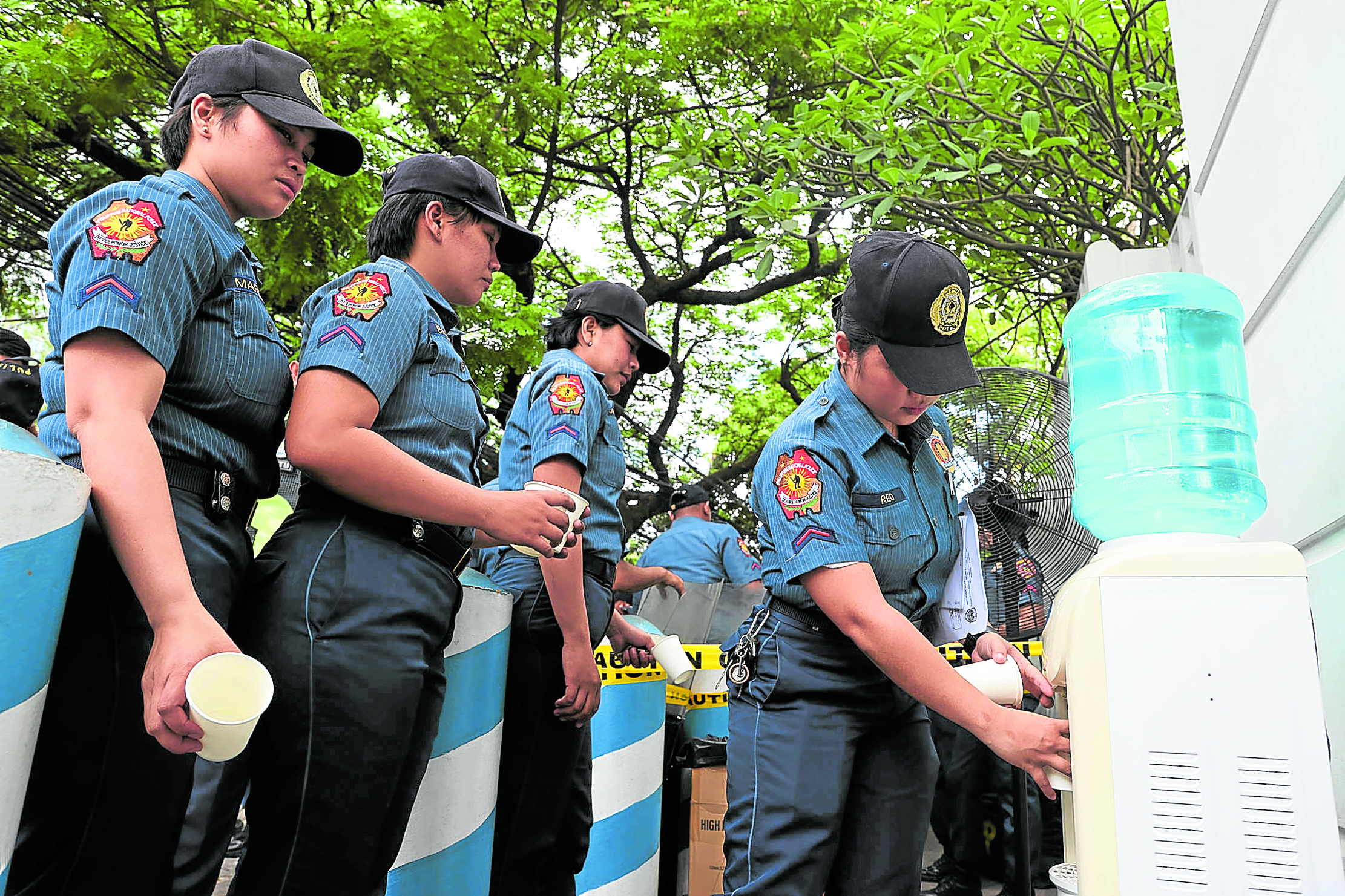
HYDRATE OFTEN Manila police officers queue up to get a drink of water near the World Health Organization office in Manila. —MARIANNE BERMUDEZ
The Trade Union Congress of the Philippines (TUCP) on Friday called on workplaces to double down on precautionary measures to protect the health and well-being of workers from the scorching heat through a “Comprehensive Heat Risk Action Plan.”
In a statement, TUCP recalled that the Department of Labor and Employment’s Labor Advisory No. 8, series of 2023, directed all employers to conduct health risk assessment due to extreme heat, provide better ventilation and adequate water, adjust rest breaks and launch information and education campaigns on what is heat stress and how to avoid it.
READ: Red Cross reminds public to stay hydrated amid high heat index
“As heat index across the nation spikes to ‘dangerous’ levels, it is our shared moral responsibility—not only of workers who toil day in and day out not only at work but also in commuting to and from work but also of the Government and most especially employers—to beat the heat together through proactive precautionary and quick response measures,” said TUCP president and House Deputy Speaker Raymond Democrito Mendoza.
The TUCP chief called for a dialogue among workers and employers through the Occupational Safety and Health (OSH) Committee in every workplace, as mandated by Republic Act No. 1105, or the OSH Law, to prioritize the various measures that should be part and parcel of their Comprehensive Heat Risk Action Plan.
Heat break proposed
The labor group proposed for a “heat break,” especially for outdoor workers, during the hottest part of the day, such as around 11 a.m. to 2 p.m., which can be facilitated through flexible work time arrangements.
It recommended better ventilation measures starting from as simple and as basic as opening the windows and adding electric fans, especially in manufacturing and industrial settings.
READ: Ex-DOH chief: Don’t to wait until you’re so thirsty to drink
There should also be “hydration reminders,” which should be done regularly to remind workers to drink adequate water even before they feel thirsty.
A “buddy system” may also be set up as a proactive monitoring system for workers to check on each other’s well-being, to supported by the openness and alertness of the management and especially the workplace safety officer.
The TUCP said companies should also conduct “heat stress orientation sessions,” supplemented by periodic refresher courses or training guides, to educate workers about identifying heat stress symptoms and appropriate responses in line with the Comprehensive Heat Risk Action Plan.